
Abrams Battle Tank is a video game developed by Dynamix and published by Electronic Arts in 1988 for MS-DOS. Designed by Damon Slye, the game is a 3D vehicle simulation of the M1 Abrams tank. The 1991 Sega Genesis port by Realtime Games Software was renamed to M-1 Abrams Battle Tank.

Red Baron is a combat flight simulation video game for MS-DOS created by Damon Slye at Dynamix. It was published by Sierra On-Line in 1990. The game was ported for Amiga and Macintosh computers in 1992.

Air Warrior was a multiplayer online combat flight simulation game launched by Kesmai in 1987. It was hosted on GEnie and used that service as a server for client software running on a variety of personal computers. It underwent continual improvement through its decade-long lifetime with Kesmai, appearing on new platforms and host services. Electronic Arts purchased Air Warrior in 1999, and became provider of the game, but it was discontinued in 2001. Sequels Air Warrior II and Air Warrior III were both released in 1997 and published by Interactive Magic.

Chuck Yeager's Air Combat is a 1991 combat flight simulation video game by Electronic Arts. Chuck Yeager was a technical consultant in the game and his digitized voice is featured in the game, giving encouragement and praise before and after missions. The game is characterized for its balance of an action laden gameplay which focuses on classical dog fights and a simple yet realistic flight model.
Combat flight simulators are vehicle simulation games, amateur flight simulation computer programs used to simulate military aircraft and their operations. These are distinct from dedicated flight simulators used for professional pilot and military flight training which consist of realistic physical recreations of the actual aircraft cockpit, often with a full-motion platform.

A-10 Tank Killer is a 1989 combat flight simulation video game for DOS developed and published by Dynamix. An Amiga version was released in 1990. The game features an A-10 Thunderbolt II attack aircraft. Following the success of Red Baron, version 1.5 was released in 1991 which included Gulf War missions and improved graphics and sounds. Several mission packs were sold separately. A sequel published by Sierra, Silent Thunder: A-10 Tank Killer II, was released in 1996.
Jetfighter is a series of 3D combat flight simulation computer games that was developed by Velocity Development starting in 1988. The player would fly a combat jet aircraft in the skies against enemy forces. The game boasted 3D graphics that were cutting-edge at the time of the game's release, and used real-world terrain. The games seldom sold well because they occupied an uncomfortable middle ground of game design - too much flight simulator for action game fans, as they realistically emulated actual combat aircraft, but too simplistic for the hardcore sim fans, who always preferred games more along the lines of the Falcon series. The series ended after the commercial failure of Jetfighter 2015. The later games had support for 3dfx Voodoo cards to run natively in DOS.
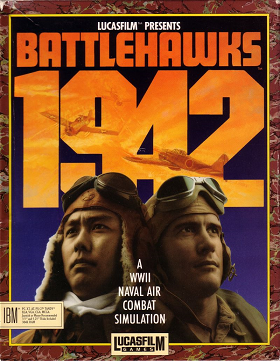
Battlehawks 1942 is a naval air combat combat flight simulation game released in 1988 by Lucasfilm Games. It is set in the World War II Pacific air war theatre, and was the first of Lucasfilm Games' trilogy of World War II flight simulations, followed by Their Finest Hour (1989) and Secret Weapons of the Luftwaffe (1991). The 127-page manual for Battlehawks 1942 includes a 100-page illustrated overview of the Pacific War. The preface to the manual was written by Richard Halsey Best, who commanded the dive bomber squadron that sank two Japanese aircraft carriers during the Battle of Midway.
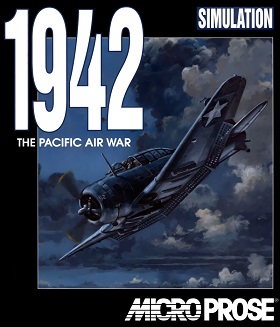
1942: The Pacific Air War is combat flight simulation developed and published by MicroProse for the PC on the DOS operating system in 1994. It is based on the U.S. and Japanese Pacific War conflict from 1942 to 1945. An expansion pack, 1942: The Pacific Air War – Scenario, was released in 1995. A sequel, European Air War, was released in 1998. Tommo purchased the rights to 1942 and digitally publishes it through its Retroism brand in 2015.
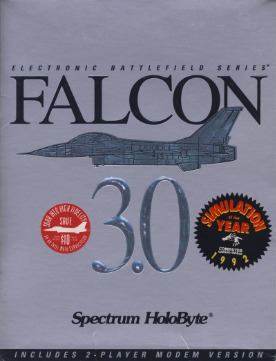
Falcon 3.0 is a combat flight simulator video game developed by Sphere Inc. and published by Spectrum HoloByte in 1991 as third official main entry in the Falcon series of the F-16 Fighting Falcon simulators.

F-15 Strike Eagle III is an F-15 Strike Eagle combat flight simulator released in 1992 by MicroProse and is the sequel of F-15 Strike Eagle and F-15 Strike Eagle II. It is the final game in the series.

F29 Retaliator is a combat flight simulator video game developed by Digital Image Design and published by Ocean Software in 1989 Amiga and Atari ST, 1991 for the PC, and for the FM Towns and NEC PC-9801 in 1992-1993. Its working title was just Retaliator. The game was developed during the end of the Cold War, based mostly on speculations on then-future aircraft that were expected to be in use by the year 2002, in particular based on the design of the Lockheed Martin F-22 and the Grumman X-29A.
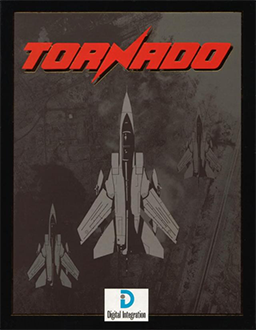
Tornado is a combat flight simulator video game by Digital Integration that models the Panavia Tornado. It was released in 1993 for DOS and Amiga. Tornado is one of the first flight simulations to offer head-to-head online dogfights.

Their Finest Hour: The Battle of Britain is a World War II combat flight simulation game by Lawrence Holland, released in October 1989 for the Amiga, Atari ST and MS-DOS systems. It was the second game in the trilogy of World War II titles by Lucasfilm Games, the others being Battlehawks 1942 (1988) and Secret Weapons of the Luftwaffe (1991). The game was released with a 192-page manual written by Victor Cross, that provided a detailed historical overview of the battle and pilots' perspectives. An expansion pack, Their Finest Missions: Volume One, was released in 1989.

AV-8B Harrier Assault is a combat flight simulator/realtime strategy game developed by Simis and first published by Domark in 1992. An updated version using SVGA graphics was released later the same year, alternatively known as SVGA Harrier. In 1994, a modified version of the SVGA version was released for the classic Mac OS under the new name Flying Nightmares, which was later ported to 3D0.
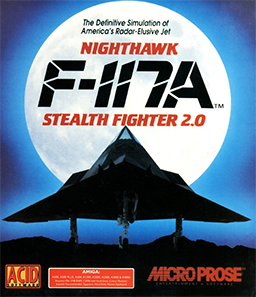
F-117A Nighthawk Stealth Fighter 2.0 is the 1991 remake of the 1988-1990 Cold War combat flight simulator video game F-19 Stealth Fighter by MicroProse, itself a remake of the 1987's Project Stealth Fighter. The original PC version was updated with a corrected aircraft model once the Lockheed F-117 Nighthawk was declassified and with 256-color VGA graphics instead of the original's 16-color EGA, among other changes.
Damon Slye is a computer game designer, director, and programmer. In 1984 he founded Dynamix with Jeff Tunnell in Eugene, Oregon. He is best known for creating the historic flight simulations Red Baron, A-10 Tank Killer, and Aces of the Pacific.

Knights of the Sky is a World War I combat flight simulator designed by Jeff Briggs and published by MicroProse in 1990 for MS-DOS. Ports to the Amiga and Atari ST followed in 1991.

Thud Ridge: American Aces in 'Nam is a computer game published by Three-Sixty Pacific in 1988 for the Commodore 64 and MS-DOS.

Harpoon is a computer wargame published by Three-Sixty Pacific in 1989 for DOS. This was the first game in the Harpoon series. It was ported to the Amiga and Macintosh.

















